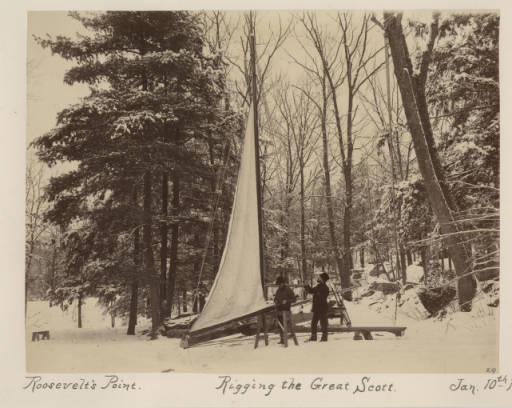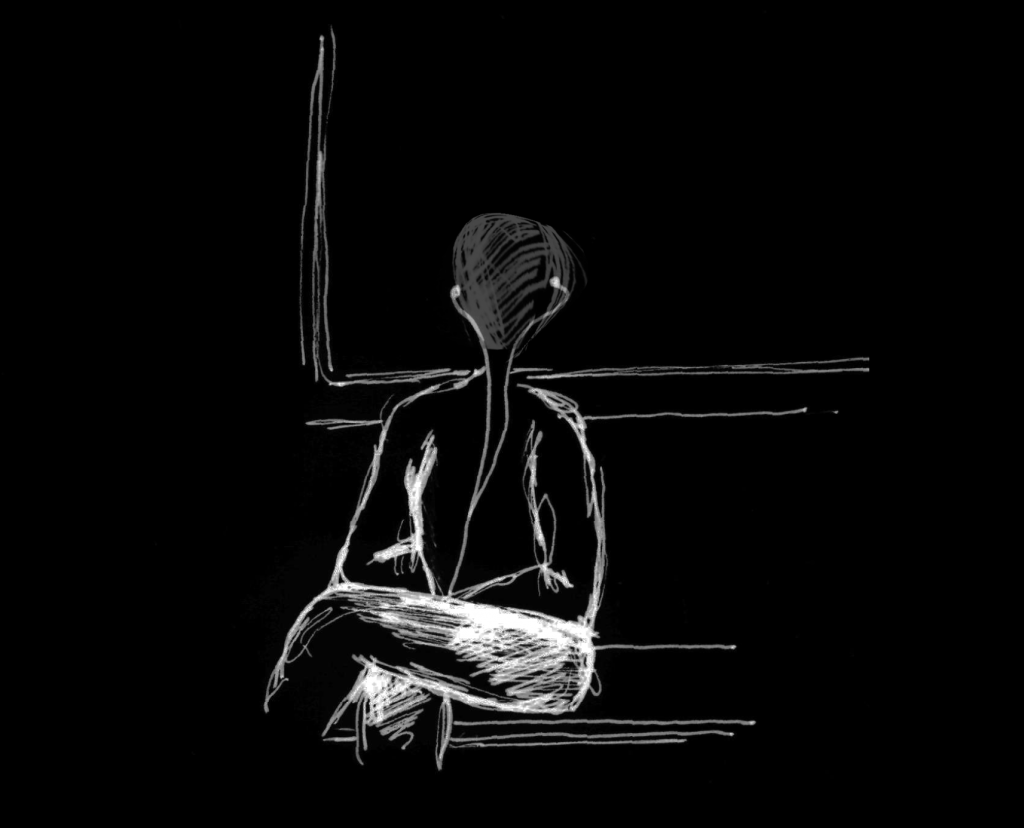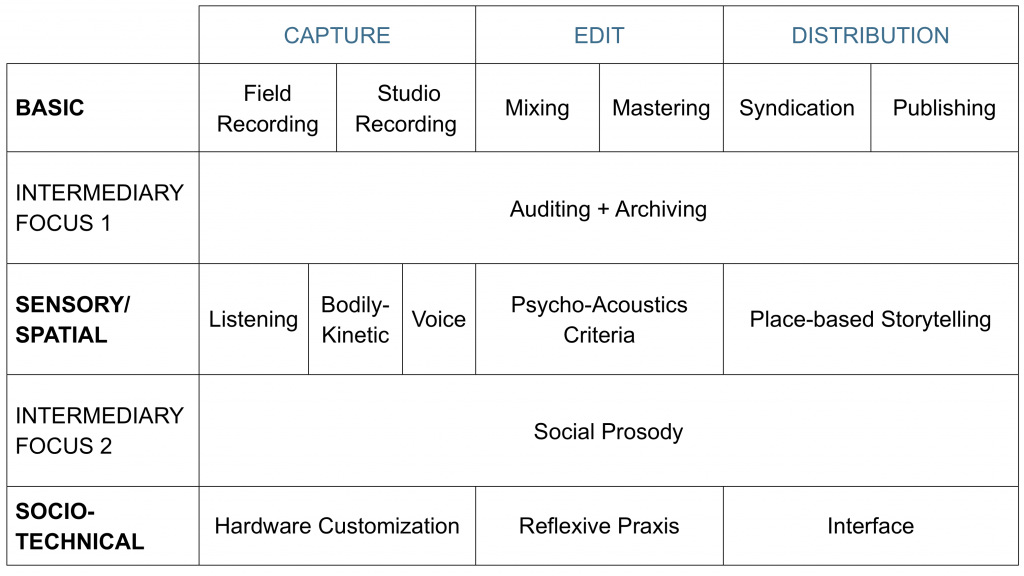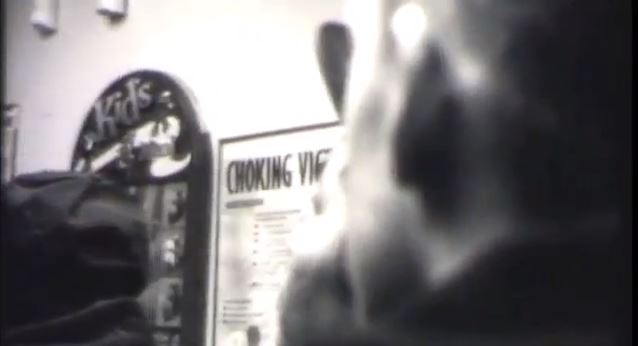Sound In Time and Place: Music and Architecture
This is a class created by Diane Moser at the New School for Jazz and Contemporary Music in the Fall of 2013
The class was put together for the sole purpose of composing music based on the elements of the New School University Center on Fifth Avenue in New York City. The first part of the semester was spent learning more about the connection between music and architecture: specifically how musical terms such as rhythm, texture, harmony, proportion, dynamics, and articulation refer both to architecture and to music.
The class also explored Pythagoras’s discovery of the mathematical ratios that make up the overtone series (circa 530 BC), and how architects such as Vitruvius, Palladio and Le Corbousier have used these ratios in their designs, and how composers, such as Iannis Xennakis, have in turn, used architectural design dimensions for their compositions.
About the Artists
Louis Cohen
Noise in the Library (to be performed in the library)
The library is usually associated with having your nose buried deep in their book, studying in solitary silence. It becomes a passive place. Nothing happens in the library. The New School’s new library has a different purpose. While it still encourages hard work and studying, it doesn’t mean to lock people up in a cell of books. Instead, it inspires activity, whether that be social or academic. This sound piece is meant to turn this passive space into an active one. A place of education, creativity and discussion. It is meant to be a recontextualization the library.
Musical Chairs (to be performed in the Event Cafe)
The Event Cafe is a lounging area equipped with a stage for performances. Students will be able to sit and enjoy performances, but without the formal occasion that the auditorium calls for. Because of this, there will be lots of motion in this space. Students can go there between classes, to eat their lunch, or just to enjoy the environment. This performance art piece is meant to emulate the hustle and bustle of the Event Cafe. The conductor gives the musicians cues to begin playing and walking around the tables. They are given specific instructions based on a system of visual directions. While it is chaotic, there is an order to the piece. Spectators can feel free to go down into the cafe to join in.
Mike Robinson
Climb That Mountain (to be performed on the 4th or 5th floor landing)
This piece is a three part representation of the movement in the building. The piece as a whole is an acceleration from a ballad to a fast ending movement with the second movement being “variable tempo.” The tempo is to be determined by passers by. The faster the passers-by walk, the faster this section is played. This represents the fast moving pace of the building and the culture of New York City that is represented by the building.
Itamar Shatz
Stairwell Conversations (to be performed on the 4th or 5th floor landing).
“Stairwell Conversations” is inspired by and dedicated to the University’s vibrant social life, written specifically to address the atmosphere of the new building’s interactive space located on the stairwell landing between the 4th and the 5th floors.
Where you are standing right now, dozens of students are about to be walking every day. They might just pass by, going from one class to another, or spend more time around the interactive space. Whatever the case may be, they are going to talk with each other. This blend of conversations will create a certain sound, combining all different languages, attitudes and content. This sound is represented through the first part of the piece. The trumpets and trombone represent laughter, while the saxophones bring a rather intellectual talk. The guitar and the bass provide intimate conversations; some tense and some calmer and warmer.
The interactive space is a junction that brings everybody together; designers, musicians, writers, professors, students and staff. To express the unity and joy brought by the presence of all these, comes the second part of the piece. That is an Afro-Beat and Brooklyn style influenced section that involves the entire band and includes written parts as well as improvisation. The transitions between the two sections reflect the various dynamics of the interactive space, considering moments of high traffic and diverse sounds versus the beauty and wholeness of conversations resonating perfectly within the space.
Quentin Tschofen and Joe Vilardi
Glass, 2013 (sound installation-location TBD)
Inspired by the façade of Kerrey Hall, Glass is an interactive sound installation, which at its core, is about movement. As visitors interact with and move through the space, an ambient sonic environment unfolds around them. Using recordings which explore the sonic properties of glass, Glass responds the visitor’s movement through the use of Kinects and a program written in Processing.
Quentin Tschofen
Brass (for Brass quintet-to be performed in the auditorium)
Brass is a composition in three sections that was written for the opening of Kerrey Hall.The first section symbolizes the construction of the building. One motive is explored here, slowly building up until it is finally heard as a fanfare in its completion: the completion of Kerrey Hall. The second section explores the concept of movement within the building, fragmenting the original theme and moving through the instruments. The third and final section is analogous to a benediction. Here, a condensed version of the initial harmonic language is featured, which finally evolves into the main theme and ultimately ends the composition.
8 minutes – 2 trumpets, trombone, french horn and tuba; 5 chairs & music stands (semi circle)
Joe Vilardi
Emerging (for brass quintet-to be performed in the auditorium)
Emerging was written with John Dewey’s words in mind: “Education is not preparation for life; education is life itself.” Inspired by such lifelong study and growth, the spirit of collaboration, and the candid nature of Kerrey Hall’s façade, Emerging is a dedication to the students of all seven of our university’s divisions who will thrive in this intersectional haven of learning. The number seven is thus used often throughout the piece’s melodic, harmonic, and rhythmic content, each use appearing separately until their fusion at the end, representing a balanced coexistence within the university.
4 minutes – 2 trumpets, trombone, french horn and tuba; 5 chairs & music stands (semi circle)
Michael Beckett-Fedarko (to be performed in the auditorium)
The Building Suite
The Building Suite is a three part piece for Jazz Nonet designed to be a sonic immersion of a typical day at the University Center. In the first movement “Morning” we enter the building as light floods in through the windows and slowly we begin our ascent up the staircase as we pass by the quite clatter of people beginning their days. This moderate walk accelerates into the second movement “Noon” in which the building comes alive with the hustle and bustle of midday activity. The multi-colored corridors become vibrant as people pass through them rapidly on their way to and from class. The constant activity finally settles down into the third and final movement, “Night” a slow release of all of the energy built up throughout the day as the last of the lights are turned off and the people exit the building only to return another day,

















